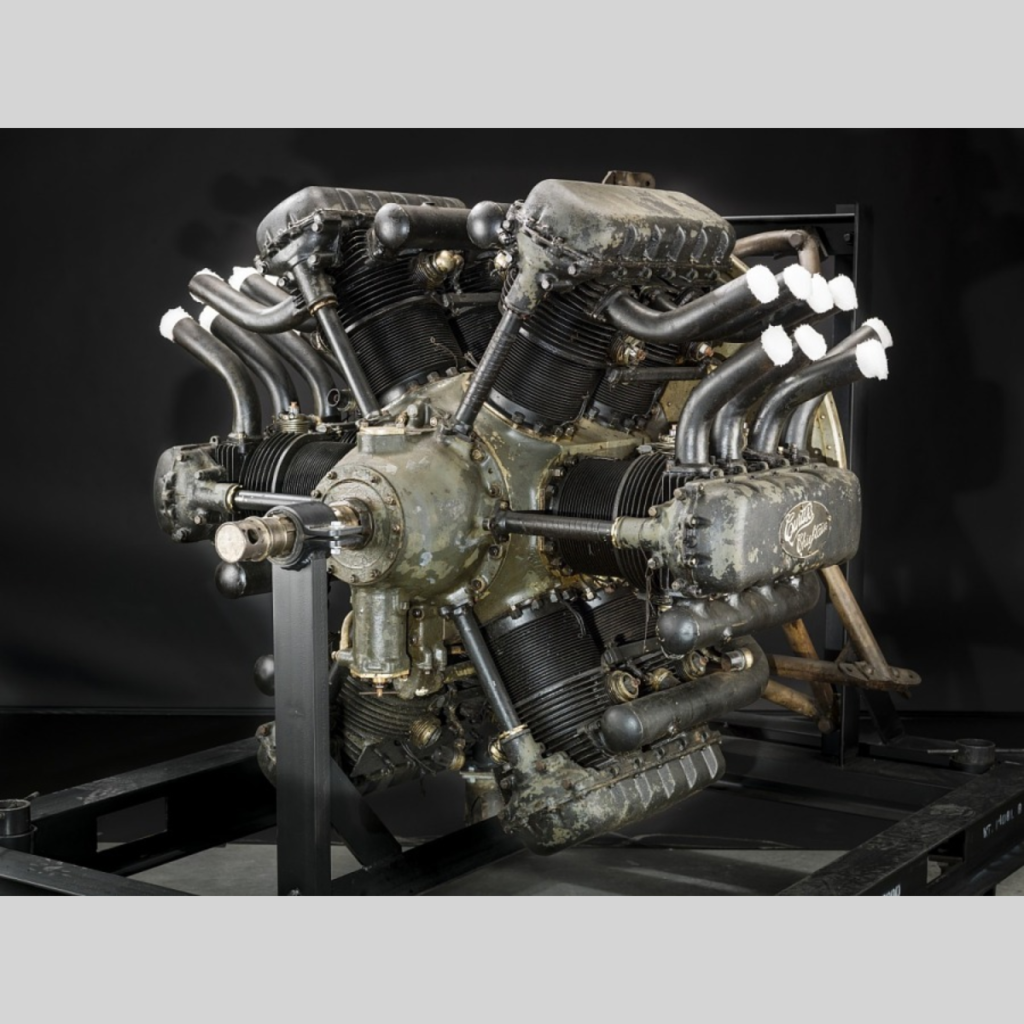
Among the most successful early engines marketed in the United States were those designed and built by aviation pioneer and inventor Glenn Curtiss of Hammondsport, New York. Early Curtiss engines were designed to power motorcycles. In 1904 a two-cylinder, V-type motorcycle engine, believed to be the first Curtiss aircraft engine, was modified to power Capt. Thomas S. Baldwin’s California Arrow, a small dirigible.
In 1926, Curtiss began the design of a 12-cylinder, two-row engine, the H-1640, that it hoped would surpass the performance of Pratt & Whitney’s Wasp engine while having a considerably smaller frontal area. It had cylinders of the second row directly behind those of the first row, and the valves were operated by an overhead camshaft for each pair of cylinders. The H-1640 was certificated on September 13, 1928. The H-1640 powered the Curtiss P-11, Thomas-Morse XP-13, and Curtiss XP-14 aircraft. However, partly because of its extremely small diameter, this engine was not very successful.
Date: Circa 1928
Country of Origin: United States of America
Type: PROPULSION-Reciprocating & Rotary
Manufacturer: Curtiss Aeroplane and Motor Company
Physical Description
Type: Reciprocating, 12 cylinders, 2 rows, radial, air cooled Power rating: 447 kW (600 hp) at 2,200 rpm Displacement: 26.9 L (1,640.1 cu in) Bore and Stroke: 143 mm (5.625 in.) x 140 mm (5.5 in.) Weight: 415 kg (915 lb)
Dimensions: Other: 45 5/16 x 51 11/16 x 51 x 65 x 55in. (115.1 x 131.3 x 129.5 x 165.1 x 139.7cm)
Approximate (On stand): 638.7kg (1408lb.)